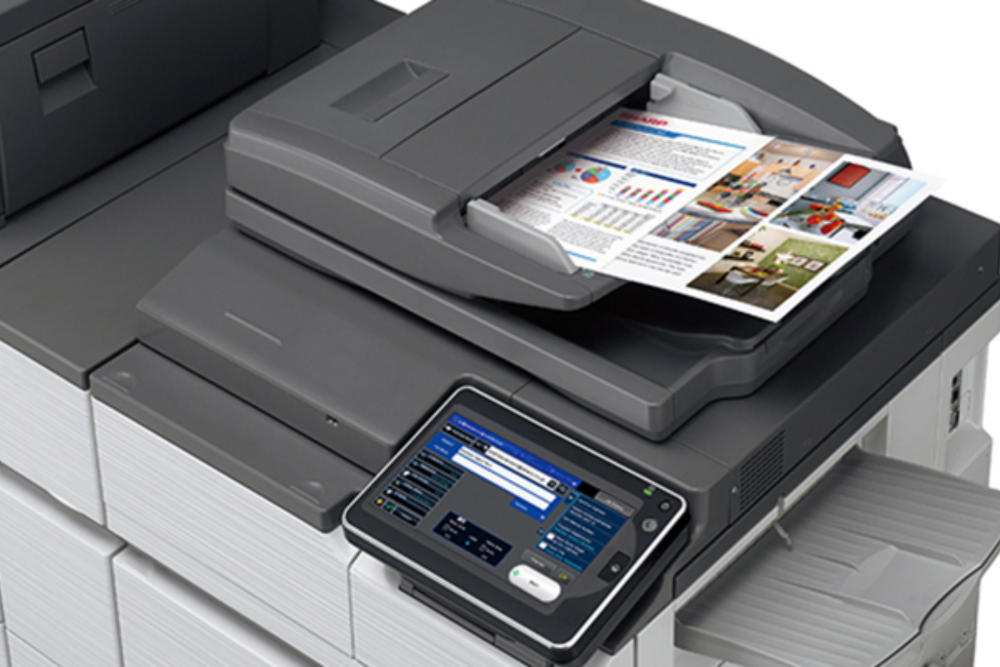
Of all the factors to take into account when buying a printer for your small or medium business, the price tag is just one. And its importance fades quickly when you consider total cost of ownership (TCO) factors such as life expectancy, toner costs and downtime.
‘Cheap’ doesn’t necessarily mean ‘economical’ when it comes to printers.
If you’d like a detailed look at the numbers, here’s how to calculate TCO yourself.
Printer Buying Basics
Any business purchase starts by identifying how it will be used. For a printer, that means:
- How many pages will you print each month? (Count how many reams of paper you use each month.)
- How many will be color?
- How long do you expect to own the printer before you replace it?
- What other features do you need? Two-sided printing? Envelope printing? Will you print on 11 X 17 paper?
With answers to these questions, you can put together a list of printers that meet your criteria.
Calculating TCO
But don’t buy just yet; you want to calculate the TCO first. Along with the information above, four more variables go into calculating the TCO.
- The price of the printer.
- The capacity of the “starter” toner cartridges. That is, how many pages can you print using the cartridge that comes in the box?
- How much will replacement cartridges cost? What’s their page capacity?
- Will you buy or lease the printer?
If you have advanced Excel skills, you could plug all of this data into a spreadsheet and produce a bar graph displaying the relative costs of each printer. But here’s how you can do it with a calculator, a piece of paper and a pencil:
- Multiply the number of pages you print each month by the number of months you’ll own the machine. Do this twice: Once for the total number of pages, and a second time for the number of color pages. Here’s an example that assumes 50% of the pages are color.
750 pages per month X 48 months = 36,000 pages
375 color pages per month X 48 months = 18,000 color pages
Why are we computing these separately? Well, every page will use black ink. Not every page will use color ink.
- Subtract the “in the box” pages from the total lifetime pages. For example, if the cartridges that come in the box can produce 2,000 pages, subtract that from the total pages in Step 1.
36,000 total pages – 2,000 starter cartridge pages = 34,000 total pages
18,000 color pages – 2,000 starter cartridge pages = 16,000 color pages
- Divide the number of remaining pages by the capacity of replacement toner cartridges. For example, if a black and white toner cartridge can print 5,000 pages:
34,000 ÷ 5,000 = 6.8
Since you can’t buy a fraction of a cartridge, round this up to 7 cartridges.
Determining the number of color cartridges requires an additional step because it takes three different toners—magenta, yellow and cyan (blue)—to produce color images. Again, if color cartridges can print 5,000 pages:
18,000 ÷ 5,000 = 3.6 (Round up to 4 cartridges)
4 X 3 = 12 cartridges
- Now you’re ready to find out how much toner cartridges cost over the printer’s lifetime. Here’s an example based on a typical box store printer.
Black cartridges: 7 X $55 = $385
Color cartridges: 12 X $80 = $960
COST OF CARTRIDGES: $1,345
- If you buy a box store printer, you’ll use it for three years longer than the typical one-year warranty. To protect your investment, you’ll buy the available two-year protection plan for $50 and hope nothing happens to the printer in years three and four.

- The hard work is done. Let’s add up all of the costs:
Price of the computer: $400
Toner: $1,345
Warranty: $50
TOTAL COST OF OWNERSHIP: $1,795
It’s not all that complicated, really. It’s just a lot of simple steps strung together.
Saving Money with Managed Print Services
Managed print services (MPS) combine outsourcing and workflow redesign to cut your printing expenditures by as much as 30%. Not all printer suppliers offer MPS; you’ll need to work with an experienced IT partner that does.
You and the partner will work together to analyze your needs and develop a custom managed print service. Along with reducing printing costs, MPS can outsource printer maintenance and streamline workflows. That means more time for you and your employees to spend on customer service, marketing and other core business functions.
Learn more about the advantages of using Managed Print Services.
Contact Rhyme with any questions and to get started with your MPS journey.
For more about managed print see:
| MPS is More than Just Printers | Managed Print |